SONGWRITING 101: HOW THE [BLEEP] DO YOU EVEN START TO WRITE A SONG?
You’re quarantined. You want to get creative and write those scathingly brilliant, catchy songs you know you have buried deep within … but you don’t know where to begin. How do you write a song without instruments?
Writing a song can be daunting for a number of reasons. Maybe the blank page you’re staring at feels like Mount Everest; you have zero music theory training; you’re a beginner and you feel too green, too old, too [fill-in-the-blank]. (By the way, there is no such thing as being too green or too old or too [fill-in-the-blank] to learn something new or go after a dream.)
I’m here with some good news! You can write songs without instruments, without years of music theory training, and without tons of experience.
I struggle a lot with imposter syndrome. I love to write songs. However, every time I do, my inner critic gets all negative self-talk-y on me and rips the joy of the process away.
Here’s the thing: if you write songs, you’re a songwriter. Let that sink in for a mo.
Even if your songs are terrible pieces of flaming hot garbage that will never see the light of day, the more you write songs, the more you’re a songwriter. That’s why I flex my songwriting muscle — and try to stretch myself past my perceived limitations — as often as possible.
In this video, I walk you through my personal songwriting process, sharing tips and tricks I’ve added to my arsenal over the years. Particularly, I walk through how to write a song without instruments. As an extra fun factor, I applied these tips and tricks to the exercise of writing A HAPPY SONG in this tutorial. My oh my, I can’t tell you how hard it is for me to write upbeat jams — so I hope you enjoy and appreciate my struggle.
For the TL;DW (too long; didn’t watch) crowd, here are some basics I refer to when I write a song without instruments.
#1 STARTING A SONG WITH NO INSTRUMENTS, NO PROBLEM
While I do play a couple of instruments, I often feel handicapped by them in my songwriting process. That’s where loop/sample websites come in handy.
Splice, Loopmasters, ProducerSpot, Wave Alchemy, Hex Loops, Mode Audio, and Producer Loops are some examples of sites that offer royalty-free loops and samples categorized by genre, key, bpm, instrument, and more.
So if I know that I want to write an R&B song, for instance, and I know I tend to sing most comfortably in the key of B, I’ll filter my search by genre (R&B), bpm (in this case, about 60-80 bpm), and my preferred key. From there, I find something I like and boom! I’m on my way.

#2 STRUCTURE / LYRICS / MELODY
& THE CATCHY FACTOR
There’s a lot we could dig into here, but in the spirit of sticking to the basics I touched on in this video…
Song structure tends to look something like this:
verse – pre-chorus – chorus – verse – pre-chorus – chorus – bridge – chorus – outro
When it comes to lyrics and melody, it doesn’t really matter (for me) which comes first. I find that one usually informs the other. If I have a concept, phrase or idiom in mind that I want to explore, I shape the melody and remaining lyrics around that first piece. If I hear a potential melody idea first, I find words and syllables that fit its rhythmic phrasing. I try to remain flexible as I work so if the original phrase or melody needs to change to improve the overall song later on, I’m not too attached to the initial spark of the idea.
Now, for the really fun part. I’ve done my fair share of research on catchy songwriting techniques. I’ve watched all those videos breaking down melodies and lyrics you hear from Ed Sheeran, Taylor Swift, Mark Ronson, Julia Michaels, Post Malone — ya know, the people who get stuck in your head and you sort of hate it (or maybe not!).
A couple tips I keep in my back pocket:
HOW TO WRITE A SONG: REPETITION
Repetition is the main ingredient for getting a song stuck in your listeners’ heads. Once you’ve nailed your first melodic phrase in your verse or chorus, repeating that phrase at least once more helps cue your listeners on how to sing along. This is straight-up psychology, peeps. Repetition comes in all shapes and sizes, so I’d suggest going down a few YouTube rabbit holes on the subject.
HOW TO WRITE A SONG: CONTRAST
Effective songs utilize clear, defined melodic sections to create a sonic story arc. An example might be: if your verse melody is low and fast-paced, I’d suggest slowing down, using fewer syllables (the epic effect!), and aim high (literally, melodically) in your chorus. Try it, it’s pretty striking.
Don’t let your desire to be catchy stop your creativity, though. After all, songwriting is about expressing yourself authentically as an artist. Stay true to you, boo!

#3 CATALOGING
Cataloging is one of my secret weapons. Here’s how it works:
Start paying attention to artists and songs you want to emulate in your own music. Does that one producer you love layer tons of vocals to create an ambient choral effect in their songs? Does that eargasmic track use a specific guitar riff that made it your #1 most played Spotify track this past year? Will that crazy good country song at 88 bpm inform you on what tempo range you’ll aim for in your next hillbilly hit?
I have a growing catalog of my own that contains lists upon lists of isolated characteristics from tracks, artists and genres that I’d like to put my own spin on in my original music. It’s a beautiful tapestry I can draw from when needed.
Moral of the story: the more you isolate what you love about a song you’ve heard, the more informed you’ll be on your own vision when you sit down to write. Don’t worry about inventing the wheel, just think about what kind of wheel you’d like to use.
• • •
Well, that’s all for now folks! Now you know how to write a song without instruments. If you ever want to talk shop, ask questions, or stalk the crap out of me, you can find me on…
instagram | facebook | youtube
If you’re looking to learn more about developing your sound and growing your artist project:
Discord Servers for Producers
How To Market Your Music Online
The Ins and Outs of Collectives, Labels, and Hybrids


Thanks so much that was so helpful
I just ran across your video today. I’ve always wanted to write a song but had no idea where to begin. Now I’m close to a troubled teen in a difficult situation and she wants to write songs. For now it’s her only escape from a place she doesn’t want to be in. The only way I can get her out is through a song. Hey, maybe you can write a song about that. I got her a guitar, but she’s only twelve and definitely needs more assistance. I gotta help the kid. Your help is so encouraging and inspiring. I hope you’re still doing this!